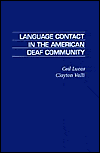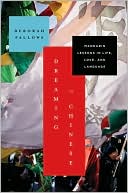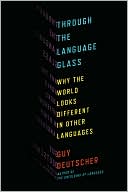Language Contact in the American Deaf Community
Started in 1986 as a project to simply describe the linguistic and sociolinguistic features of contact signing and to determine if this type of signing is aptly labeled a pidgin, this book blossomed in depth as the authors' data increased. The initial narrow goals of the book expanded and now project a much larger picture of language contact in the American deaf community. "We were forced...to consider issues somewhat broader than those addressed by the (initial) project," writes Lucas in the...
Search in google:
Started in 1986 as a project to simply describe the linguistic and sociolinguistic features of contact signing and to determine if this type of signing is aptly labeled a pidgin, this book blossomed in depth as the authors' data increased. The initial narrow goals of the book expanded and now project a much larger picture of language contact in the American deaf community. "We were forced...to consider issues somewhat broader than those addressed by the (initial) project," writes Lucas in the preface. The result is a superbly-researched text, documenting the tireless efforts of Lucas and Valli over the last six years. Included in the book is a model of linguistic outcomes of language contact in the deaf community, the patterns of language use which emerged from the data, and the implications of the findings on deaf education, second language teaching, and interpreting.Key Features* Describes language contact in the deaf community within the larger context of studies of language contact* Reviews current issues and research on language contact* Re-examines claims that the outcome of language contact in the deaf community is a pidgin* Demonstrates what is unique about language contact in the deaf community based on analysis of videotaped data* Discusses the educational and teaching implications of findings with regard to language contact in the deaf community Booknews What began as a simple linguistic treatment of "contact signing," considered a pidgin of American Sign Language and English, grew into a broad study of the language sophistication of deaf people, including explorations of what language or combinations of languages they use in various situations, the vocabulary and syntax borrowing, when a language becomes itself rather than a merging of others, and other topics. Assumes no knowledge of ASL or advanced linguistics. Annotation c. Book News, Inc., Portland, OR (booknews.com)
Transcription ConventionsxiPrefacexiiiAcknowledgmentsxviiChapter 1What Happens When Languages Come in Contact1Chapter 2Taking Another Look at Language Contact in the Deaf Community49Chapter 3Contact Signing in the Context of Language Contact Studies107Chapter 4Postscript: Implications for Second Language Learning and Teaching, Interpreting, and Deaf Education117Appendix IRaw Percentages of Judgment Task125Appendix IITranscriptions of Videotaped Segments129Bibliography147Index157
\ BooknewsWhat began as a simple linguistic treatment of "contact signing," considered a pidgin of American Sign Language and English, grew into a broad study of the language sophistication of deaf people, including explorations of what language or combinations of languages they use in various situations, the vocabulary and syntax borrowing, when a language becomes itself rather than a merging of others, and other topics. Assumes no knowledge of ASL or advanced linguistics. Annotation c. Book News, Inc., Portland, OR (booknews.com)\ \








